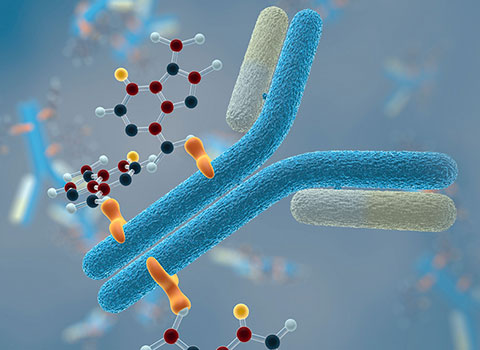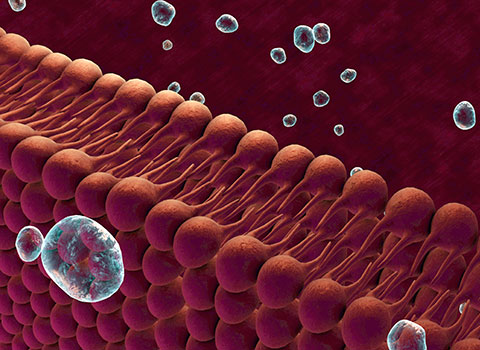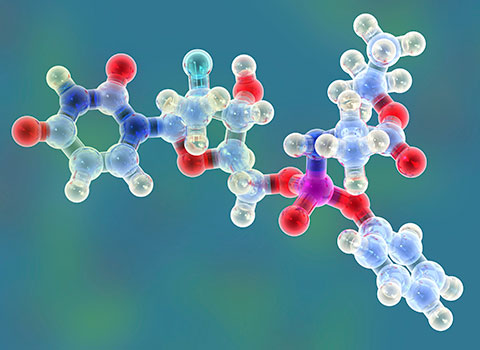SWATH Acquisition, Ensuring Nothing is Missed
SWATH Acquisition on a SCIEX TripleTOF® system has rapidly become one of the premier mass spec acquisition strategies for identification and quantitation of analytes complex samples. No other technique can do what SWATH can do. SWATH is the only data independent acquisition (DIA) technique that allows comprehensive detection and quantitation of virtually every detectable compound in a sample (MS/MSALL). This provides confidence in your quantitative results and virtually eliminates the risk of missing a critical component. SWATH Acquisition strategy can only be achieved through the power and speed of SCIEX TripleTOF® and QTOF technology. If it’s not SCIEX, it’s not SWATH.
SWATH is a huge advantage, enabling maximum information to be derived from the data.
Dr. Ruedi Aebersold, Institute of Molecular Systems Biology, ETH Zurich, and University of Zurich, in Switzerland
Eliminate the Fear of Missing a Relevant Analyte
Reduce the risk that you’ve missed a critical component in your sample through the unbiased, comprehensive data acquisition strategy that delivers the data completeness your experiments demand.
SWATH Acquisition is a data-independent acquisition strategy, and when combined with the sensitivity and high-speed MS/MS acquisition enabled only by SCIEX TripleTOF and QTOF hardware, every detectable analyte in your sample is fragmented – this is true MS/MSALL. As the name suggests, you get a complete MS and MS/MS picture of everything detectable in your sample, without the need for repeated runs or re-analysis.
Learn More about SWATH Acquisition Here >
Data-dependent vs. Data-independent acquisitions
How is SWATH different? Let’s explain.
Data Dependent Acquisition (DDA):
During an LC-MS analysis, there are many analytes eluting from your column over time and entering the mass spec. In data-dependent acquisition, an MS spectrum is collected on a broad m/z range, and the analyte peaks are detected and sorted by descending intensity. MS/MS acquisition is then triggered for the analytes starting at the top of the list. This is repeated over and over again across the LC gradient. Here a narrow Q1 isolation window is used to send only that analyte through for MS/MS analysis. But DDA has one critical limitation: when there are many analytes eluting at the same time and they are highly varied in abundance, there is a high risk of lower level analytes either not being detected in the original MS spectrum or the mass spec running out of time (too slow relative to the complexity of the sample) to capture MS/MS spectra for everything detected in MS mode. This creates gaps in your data.

SWATH Acquisition (Data Independent Acquisition (DIA)
In SWATH Acquisition, the mass spec does not require the initial detection of an MS peak to proceed to MS/MS analysis. The mass spec uses a wider Q1 isolation window and steps it across the entire m/z mass detection range, collecting full MS/MS spectra on every detectable analyte that passes through each Q1 window. The full mass range is interrogated in an LC time frame (short cycle times), ensuring you get the full MS and MS/MS picture of every peak that was detectable in your sample. This provides an unparalleled level of data completeness.

Detect Low Abundance Analytes, Even in Complex Samples
The more complex your sample becomes, the more difficult it is for your mass spec system to identify and quantify the lower abundance analytes. SWATH Acquisition powered by TripleTOF technology allows you to see everything detectable, whether at high concentrations or low.
Detecting low-abundance compounds in complex samples is challenging, even for today’s powerful MS analyzers. Interferences in MS spectra can cause difficulties in detecting low-level analytes even with high-resolution systems. Also, high-level analytes can occupy a lot of the cycle time of the mass spec, where MS/MS is typically collected in order of intensity, leaving no time to capture MS/MS information on the lower level analytes. These are often the ones of most interest. Having high dynamic range is also imperative. But it’s not enough.
To address this, a critical inter-relationship in technology performance is required: Q1 acquisition window control and MS/MS acquisition resolution at high speed.
Key Technology Criteria 1. Variable Window Acquisition
SCIEX’s patented SWATH technology is powered by Variable Window Acquisition. With the control to adjust your Q1 isolation window size, you are able to utilize smaller Q1 m/z windows in the densest m/z region of your samples (where you expect the largest number of compounds and analytes). The result is increased specificity such that you capture deeper information on your sample, reducing the risk of missing low abundance peaks in your complex samples.
Take a proteomics sample as an example –
Many peptides lie in the mass range of 500-800 m/z. With Variable Window Acquisition , you are able to utilize smaller Q1 SWATH windows in this mass range, delivering deeper coverage of peaks in this dense area of your sample, then use wider windows across the remaining mass range. Overall, this strategy provides you with both comprehensive analyte coverage and the added power to dig deeper to detect those lower abundance compounds in your sample.
In the Figure-1, by adjusting the SWATH windows from 25 Da fixed width at 80 msec each (32 windows total) to 100 variable width windows at 25 msec each, ~120% more proteins were quantified in the sample.
Learn More About How Variable Windows Improve Data Quality >

Key Technology Criteria 2. MS/MS Resolution at High Speed
As mentioned, complex samples can occupy your mass spec’s valuable scan time, allowing your system only enough time to capture MS/MS information on the highest level analytes in your sample, whether those are the ones you care about or not. And when utilizing data-dependent acquisition strategies, peaks detected at very low abundances may not even trigger the collection of MS/MS, which is essential for compound identification.
With the TripleTOF® 6600 and SWATH® acquisition, up to 100 MS/MS per second can be acquired, without sacrificing spectral resolution, enabling a much higher number of Q1 windows. This provides not only better detection of low-level analytes but most importantly, more compound identifications and quantitation in each sample.
Shown in the Figure-2 are 2 co-eluting peptides. With SWATH Acquisition utilizing the TripleTOF 6600 system, the low abundant compound (orange box shown below) could be easily detected and quantified in the presence of the higher abundance peptide.

Capture a Complete Digital Archive of your Sample in the First Analysis
Stop storing samples, and start storing data. SWATH Acquisition collects all the data you need on your sample the first time. This becomes especially critical when time is a factor, reanalysis is not an option, sample quantity is limited, or your sample is at risk to degrade.
As a data-independent acquisition strategy, SWATH Acquisition collects MS and MS/MS information on every detectable peak –leaving you with an option to re-interrogate your sample data should new questions arise tomorrow. Your digital archive is your safety net, allowing you to re-analyze your sample without having to re-run it on your mass spec. Consider SWATH Acquisition data like a biobank of comprehensive digital maps of your samples, without having to keep the samples themselves.

Quantify your Analytes with Superb Confidence
At the core of high quality, high specificity quantitation by mass spec is excellent MS/MS sensitivity, wide dynamic range, and exceptional reproducibility. SWATH Acquisition using SCIEX TripleTOF technology delivers on all 3.
It’s often not just what is in our sample that matters, but ‘how much’ is in our samples that is critical to allow us to make conclusions or drive decisions. SWATH Acquisition is a data-independent acquisition strategy with quantitative muscle like no other. From delivering an order of magnitude deeper quantitative coverage using high-resolution MS/MS data (over MS) to the verified sample-to-sample reproducibility, SWATH can deliver solid quantitative results that will advance your research, approaching that of the gold standard MRM quantitation strategy.
Explore how SWATH is being leveraged in these key application areas.
Spend more time on the biology and less time on the technology.
- Dr. Robert Moritz, ISB
Reduce Laborious Method Development
Stop spending hours or days developing methods to run your samples and experiments. SWATH Acquisition utilizes generic MS acquisition settings, requiring little to no method development, so your time and resources are spent getting data and results.
Developing and optimizing targeted mass spec acquisition methods to optimally detect (and later quantify) your analytes of interest can be time-consuming, taking your time away from important work like actually running your samples and getting new exciting results. With minimal parameters to set-up and adjust, SWATH provides a single acquisition strategy that produces ultra-high quality quantitative data, without the hours of laborious method optimization.
How is SWATH Acquisition different? A typical MRM-based assay, as an example, requires you to optimize your method upfront to select for the compounds or MRM transitions you want to detect.
With SWATH Acquisition, a single generic MS acquisition method is used all of the time. This means you select your compounds of interest from the digital map AFTER you collect your comprehensive MS and MS/MS data on your sample.
But most importantly, should your data analysis present new questions, you can simply re-interrogate the data you’ve already collected rather than updating your acquisition method and re-analyzing your sample from step 1.
And once your SWATH Acquisition method is optimized for a sample type, the same method can be used for analysis across many similar samples no matter what analytes you're studying, saving you tremendous time.







